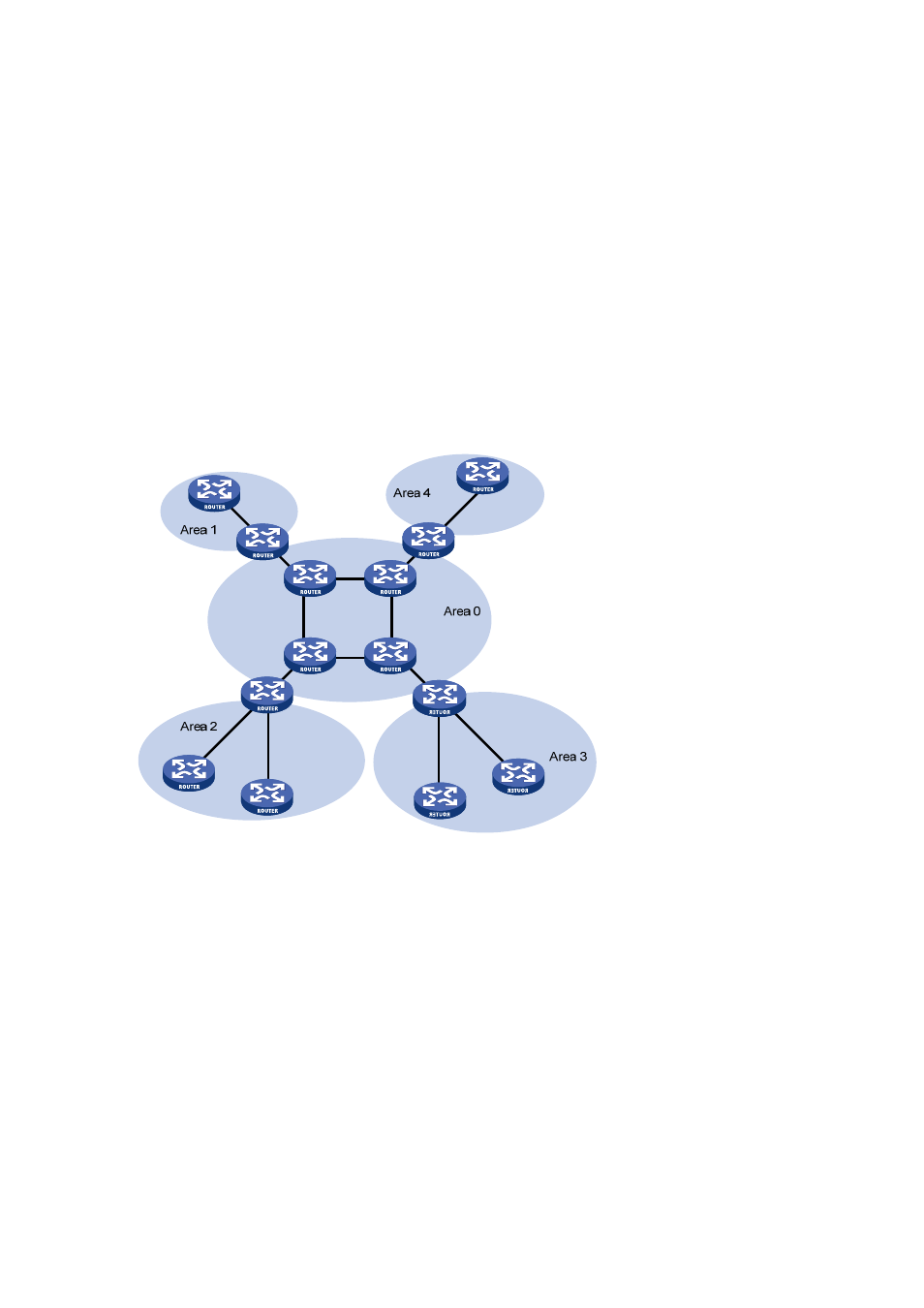Ospf area partition and route summarization, Area partition, Classification of routers – H3C Technologies H3C WX6000 Series Access Controllers User Manual
Page 238

25-4
OSPF Area Partition and Route Summarization
Area partition
When a large number of OSPF routers are present on a network, LSDBs may become so large that a
great amount of storage space is occupied and CPU resources are exhausted by performing SPF
computation.
In addition, as the topology of a large network is prone to changes, enormous OSPF packets may be
created, reducing bandwidth utilization. Each topology change makes all routers perform route
calculation.
To solve this problem, OSPF splits an AS into multiple areas, which are identified by area ID. The
boundaries between areas are routers rather than links. A network segment (or a link) can only reside in
one area, in other words, an OSPF interface must be specified to belong to its attached area, as shown
in the figure below.
Figure 25-1
OSPF area partition
After area partition, area border routers perform route summarization to reduce the number of LSAs
advertised to other areas and minimize the effect of topology changes.
Classification of Routers
The OSPF routers fall into four types according to the position in the AS:
1) Internal
Router
All interfaces on an internal router belong to one OSPF area.
2) Area Border Router (ABR)
An area border router belongs to more than two areas, one of which must be the backbone area. It
connects the backbone area to a non-backbone area. The connection between an area border router
and the backbone area can be physical or logical.
3) Backbone
Router
At least one interface of a backbone router must be attached to the backbone area. Therefore, all ABRs
and internal routers in area 0 are backbone routers.